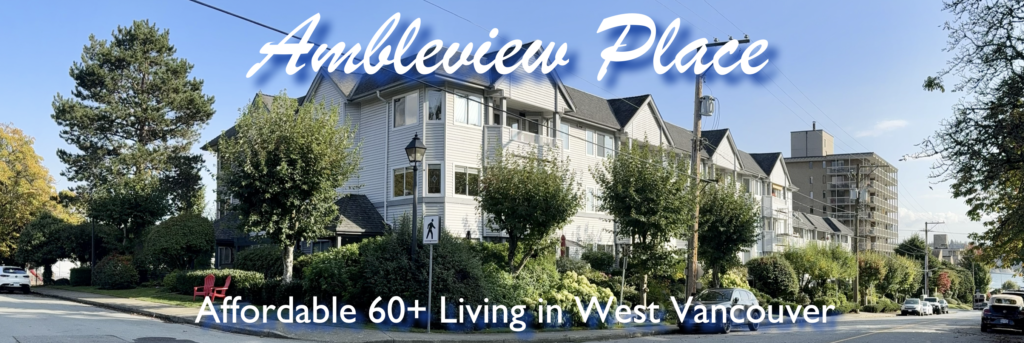The West Vancouver History

A Historical Journey through West Vancouver, BC
Exploring Ambleside and Dundarave
Introduction:
On March 15, 1912, the Municipality of West Vancouver came into existence, separating from the District of North Vancouver. Just a month later, on April 6, 1912, the first municipal election was held. The turning point for West Vancouver’s growth occurred in November 1938 when the Lions Gate Bridge opened to traffic, connecting this previously semi-isolated community to the mainland. While some homes in West Vancouver have roots dating back to the 1920s and 30s, the majority of existing dwellings were constructed during the 1970s and 80s, many of them within British Pacific Properties’ developments.
Nestled along the southwestern coast of British Columbia, West Vancouver stands as a picturesque municipality steeped in centuries of history. This essay embarks on an exploration of West Vancouver’s captivating past, with a special emphasis on the enchanting neighborhoods of Ambleside and Dundarave. From its Indigenous heritage to its evolution into a modern suburban enclave, this narrative offers a comprehensive overview of the region’s development and significance.
Indigenous Roots:
Centuries before European settlers arrived, West Vancouver’s territory was inhabited by Indigenous peoples, primarily the Squamish Nation. These Indigenous communities thrived along the Burrard Inlet, harnessing its bountiful resources, including fish and cedar trees used for canoes and longhouses. Dundarave and Ambleside likely served as vital gathering spots and seasonal settlements for these communities.
Early European Exploration:
The late 18th century ushered in European explorers, with Captain George Vancouver’s 1792 expedition mapping the region. Initial contact between Europeans and Indigenous peoples spurred the fur trade, laying the groundwork for economic development. Fur traders, explorers, and settlers flocked to the area, setting the stage for the future.
The Emergence of Dundarave and Ambleside:
Dundarave and Ambleside took shape as distinct communities in the late 19th century. The region’s natural beauty and proximity to Vancouver beckoned settlers in search of a serene coastal escape. The Pacific Great Eastern Railway’s establishment in the early 20th century further eased access to West Vancouver, catalyzing growth and development.
The Interwar Years:
The interwar years marked significant growth in West Vancouver, with both Ambleside and Dundarave witnessing the construction of homes, schools, and community infrastructure. The picturesque waterfront and expansive parks, notably Ambleside Park, played pivotal roles in attracting residents and visitors alike.
World War II and Postwar Prosperity:
World War II had a profound impact on West Vancouver, as the region contributed to the war effort through shipbuilding and other wartime industries. Post-war, returning soldiers and a booming economy fueled rapid suburbanization. Ambleside and Dundarave experienced an influx of new residents and witnessed the expansion of retail and commercial establishments.
Modern Development and Cultural Diversity:
The latter half of the 20th century witnessed West Vancouver’s transformation into a modern and culturally diverse community. Ambleside and Dundarave flourished as hubs for the arts, with galleries and studios dotting their landscapes. Additionally, the area’s multiculturalism enriched the tapestry of traditions and experiences.
Challenges and Conservation:
West Vancouver faced challenges related to urban sprawl and environmental conservation. Balancing development with the preservation of natural beauty became an ongoing endeavor. Communities in Dundarave and Ambleside rallied around conservation initiatives, such as safeguarding the waterfront and local parks.
Ambleside and Dundarave Today:
Today, Ambleside and Dundarave stand as vibrant neighborhoods that continue to attract residents and visitors alike. Their charming streets, boutique shops, and breathtaking ocean views make them highly sought-after places to call home. These lively communities host a variety of cultural events, festivals, and activities, fostering a strong sense of belonging among residents.
Conclusion:
The history of West Vancouver, with a particular spotlight on Ambleside and Dundarave, unfolds as a captivating saga of growth, transformation, and cultural diversity. From its Indigenous roots to its contemporary identity, this coastal municipality has evolved into a vibrant and unique part of British Columbia’s landscape. The legacies of Indigenous peoples, early settlers, and those who contributed to its development continue to shape West Vancouver’s character, ensuring its enduring place in the annals of Canadian history.

